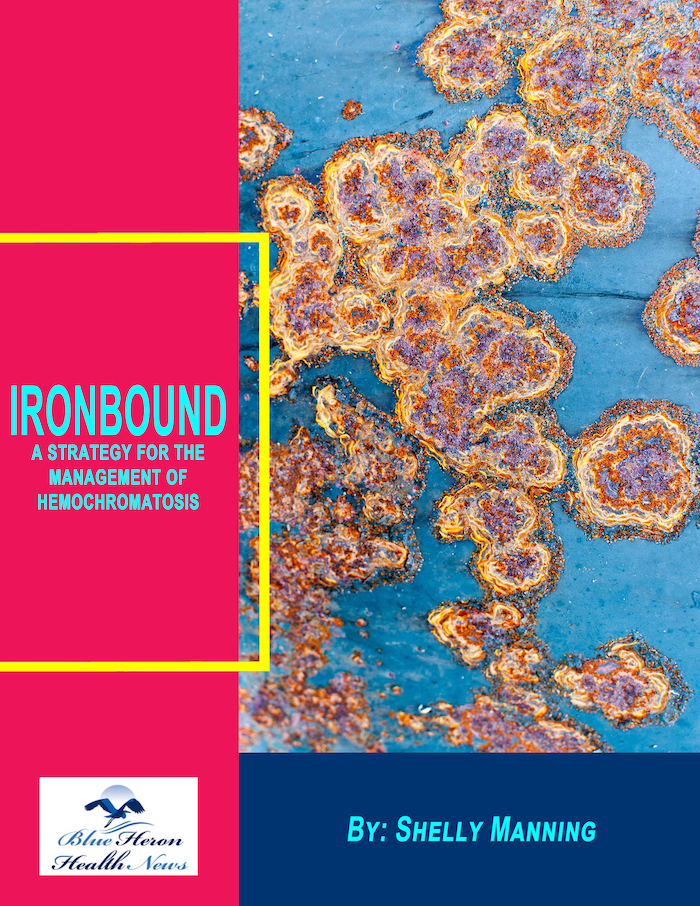
Ironbound™ A Strategy For The Management Of Hemochromatosis By Shelly Manning The 5 superfoods explained by Shelly Manning in this eBook play an important role in reducing the levels of HCT. The absorption of the excessive amount of iron by the genes of HCT can be blocked by these superfoods. In this way, the information provided in this eBook can help in resolving the problem of excess iron in your body naturally without any risk of side effects.
How is hemochromatosis diagnosed?
Comprehensive Guide to Diagnosing Hemochromatosis
Hemochromatosis is a genetic disorder characterized by excessive absorption and storage of iron in the body, leading to iron overload. Early diagnosis is crucial to prevent serious complications such as liver disease, heart problems, and diabetes. This comprehensive guide outlines the process of diagnosing hemochromatosis, including the evaluation of symptoms, medical history, laboratory tests, genetic testing, and imaging studies.
1. Clinical Evaluation
1.1 Medical History
- Family History: Assessing for a family history of hemochromatosis or related conditions, such as liver disease, diabetes, or heart disease.
- Symptoms: Evaluating symptoms such as fatigue, joint pain, abdominal pain, loss of libido, and skin discoloration.
- Diet and Lifestyle: Reviewing dietary habits, alcohol consumption, and any use of iron supplements.
1.2 Physical Examination
- Liver Enlargement: Palpating the abdomen for an enlarged liver (hepatomegaly).
- Skin Changes: Observing for skin discoloration, such as a bronze or grayish hue.
- Joint Examination: Assessing for joint tenderness, swelling, and limited range of motion, particularly in the hands and fingers.
2. Laboratory Tests
Laboratory tests are essential for evaluating iron levels and liver function, which are crucial for diagnosing hemochromatosis.
2.1 Serum Ferritin
- Purpose: Measures the amount of stored iron in the body.
- Interpretation: Elevated serum ferritin levels indicate increased iron stores. Levels above 300 ng/mL in men and 200 ng/mL in women are suggestive of iron overload.
2.2 Transferrin Saturation
- Purpose: Measures the percentage of transferrin (a protein that carries iron) that is saturated with iron.
- Interpretation: Transferrin saturation above 45% is indicative of iron overload and warrants further investigation.
2.3 Serum Iron and Total Iron-Binding Capacity (TIBC)
- Serum Iron: Measures the level of iron in the blood.
- TIBC: Assesses the blood’s capacity to bind iron.
- Interpretation: Elevated serum iron and decreased TIBC can indicate iron overload.
2.4 Liver Function Tests
- Purpose: Evaluates liver health and function by measuring enzymes such as ALT, AST, and alkaline phosphatase.
- Interpretation: Elevated liver enzymes may indicate liver stress or damage due to iron overload.
3. Genetic Testing
Genetic testing is used to confirm hereditary hemochromatosis by identifying specific gene mutations associated with the condition.
3.1 HFE Gene Testing
- Mutations Tested: The two most common mutations tested are C282Y and H63D.
- Interpretation:
- C282Y Homozygous: Having two copies of the C282Y mutation confirms a high risk for developing hemochromatosis.
- Compound Heterozygous (C282Y/H63D): Having one copy of each mutation indicates a moderate risk.
- H63D Homozygous: Having two copies of the H63D mutation indicates a lower risk but can still lead to iron overload in some cases.
3.2 Additional Genetic Tests
- Other Mutations: Testing for less common mutations such as those in the TFR2, HAMP, and SLC40A1 genes if HFE mutations are not present.
4. Imaging Studies
Imaging studies can assess the extent of iron accumulation in the liver and other organs.
4.1 Magnetic Resonance Imaging (MRI)
- Purpose: Non-invasive method to assess iron levels in the liver and other organs.
- Interpretation: MRI can quantify liver iron concentration, providing a clear picture of iron overload severity.
4.2 Ultrasound
- Purpose: Used to detect liver enlargement and structural abnormalities.
- Interpretation: May show changes consistent with liver disease but is less specific for iron quantification.
5. Liver Biopsy
A liver biopsy may be performed to directly assess iron accumulation in liver tissue and evaluate liver damage.
5.1 Procedure
- Technique: A small sample of liver tissue is obtained using a needle under local anesthesia.
- Analysis: The tissue is examined under a microscope to assess iron deposits and liver damage.
5.2 Indications
- When to Perform: Recommended when non-invasive tests are inconclusive or if there is suspicion of advanced liver disease.
- Risks: Although generally safe, liver biopsy carries risks such as bleeding and infection.
6. Differential Diagnosis
It is essential to differentiate hemochromatosis from other conditions that can cause similar symptoms or elevated iron levels.
6.1 Secondary Hemochromatosis
- Causes: Conditions such as chronic liver disease, multiple blood transfusions, and certain anemias can lead to secondary iron overload.
- Evaluation: Reviewing patient history and additional testing to identify underlying causes.
6.2 Other Genetic Disorders
- Wilson’s Disease: A genetic disorder causing copper accumulation, which can present with liver disease.
- Alpha-1 Antitrypsin Deficiency: A genetic disorder affecting the liver and lungs.
7. Monitoring and Follow-Up
Regular monitoring and follow-up are crucial for managing hemochromatosis and preventing complications.
7.1 Regular Blood Tests
- Frequency: Periodic testing of serum ferritin and transferrin saturation to monitor iron levels.
- Adjustment of Treatment: Adjusting phlebotomy frequency or chelation therapy based on test results.
7.2 Liver Surveillance
- Imaging Studies: Regular MRI or ultrasound to monitor liver health and detect early signs of liver damage or cancer.
- Liver Biopsy: Periodic biopsies may be necessary in severe cases to assess ongoing liver health.
7.3 Genetic Counseling
- Family Screening: Recommending genetic testing for family members to identify those at risk.
- Reproductive Counseling: Providing information to at-risk individuals about the implications for offspring and the importance of early screening.
8. Conclusion
Diagnosing hemochromatosis involves a combination of clinical evaluation, laboratory tests, genetic testing, and imaging studies. Early diagnosis is crucial for effective management and prevention of complications associated with iron overload. Regular monitoring and follow-up are essential to adjust treatment and ensure optimal health outcomes. By understanding the diagnostic process and the importance of early intervention, healthcare providers can improve the quality of life for individuals with hemochromatosis.
Ironbound™ A Strategy For The Management Of Hemochromatosis By Shelly Manning The 5 superfoods explained by Shelly Manning in this eBook play an important role in reducing the levels of HCT. The absorption of the excessive amount of iron by the genes of HCT can be blocked by these superfoods. In this way, the information provided in this eBook can help in resolving the problem of excess iron in your body naturally without any risk of side effects.
